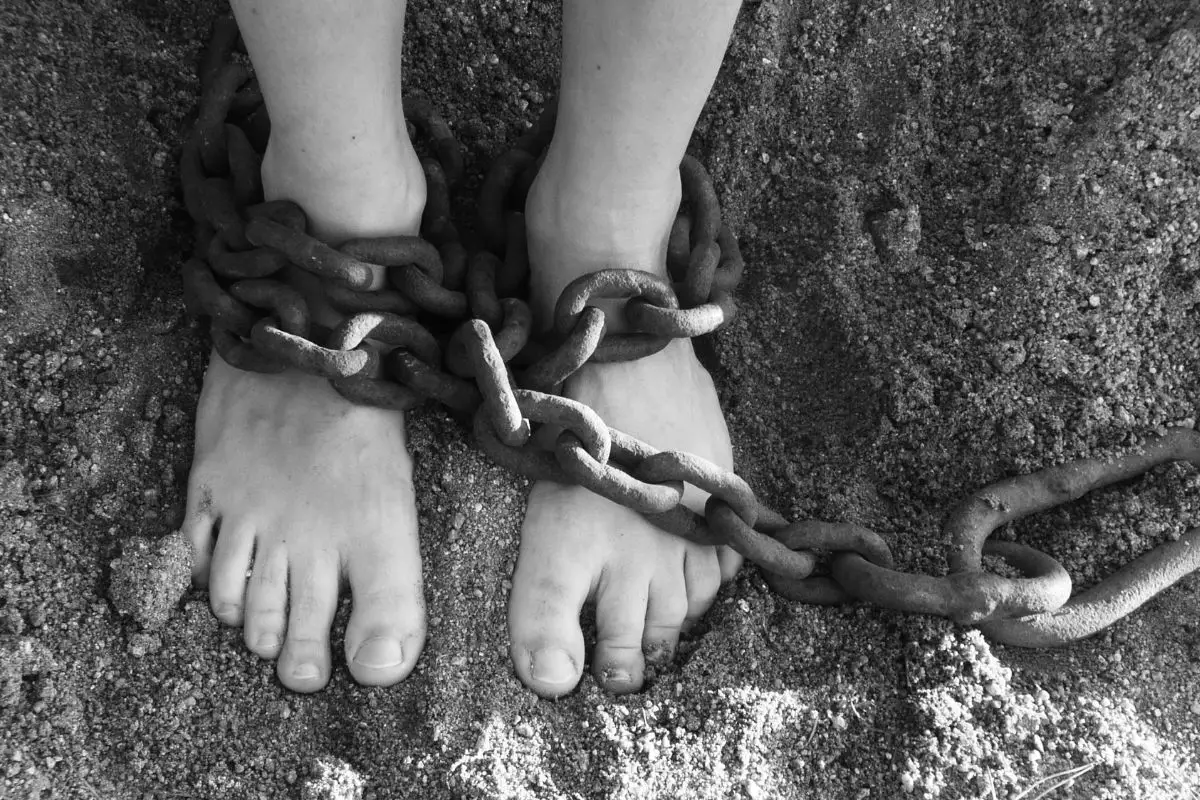The first captives arrived at the Jamestown Colony in America in 1619. At this point, most historians consider slavery to have been officially implemented in the states.
Human chatttel slavery was active from 1776 to 1865, particularly in the South. For almost 100 years, enslaved African persons were captured, sold, and even tortured. Approximately 10 million of them were held in the United States.
Like most states, New Hampshire also played a role in the slave trade, with some evidence suggesting that slavery in New England continued well into the 1900s.
Today, we’ll look at the history of slavery in New Hampshire, how it was founded, how slaves were treated, and how this abysmal practice eventually ended in the state.
The Start Of Slavery In New Hampshire
Although human chattel slavery didn’t become ‘officially’ active until around 1776, the first enslaved persons arrived in America in 1619, and the first enslaved African arrived in New Hampshire in 1649.
By the time of the American Revolution, many slaves were living and working in the area. Although some may believe that slavery was exclusively a ‘southern thing,’ this isn’t the case.
Not only were enslaved persons kept and put to work in the area, but many were even trafficked into the trade, and wealthy merchants often bought and sold African children.
If you learned anything about slavery in school, you were probably sold the idea that slavery began in states like Maryland and Virginia and that those in New England were at the forefront of the fight to abolish it.
There is undoubtedly some element of truth here, but the reality is far more bitter.
How Did Slavery Work In New Hampshire?
In the south, we heard of large-scale plantations and agricultural missions where slaves were put to work and tortured en masse. However, throughout New England and New Hampshire, the reality is slightly different.
In New England and New Hampshire, slaves often didn’t live in large communities as they did in the south. In the south, the communities relied on the labor of enslaved Africans to keep their economies afloat – especially in the rice and tobacco industries.
However, in New England and New Hampshire, slaves were often put to work in small households, businesses, or farms, with only one or two slaves occupying one of these areas at a time.
Areas like New Hampshire had more varied economies. Therefore, slaves were often required to learn more specialist skills. Slaves were used by merchants, and even doctors, to work alongside them and help around their households.
This is quite a contrast to the south, especially when we look at slaves and their gender roles – in the south, it was often the women who were put to work in households, while men would perform agricultural work.
In New England and New Hampshire areas, most agricultural slave work didn’t exist, so both genders would be exploited in household settings or small business operations.
New Hampshire As A Base
Although areas like New Hampshire were slower to accept slaves, probably because there were other alternatives in the area, slavery soon became a widespread addition to the area.
Areas like Portsmouth were one of few that didn’t impose tariffs on slaves, which saw New Hampshire become a popular base for trafficking slaves into America and then shipping them off to other colonies.
In New Hampshire, most censuses up until the revolution noticed an increase in the black population, but this was notably lower than in other colonies throughout New England.
The Nightingale and Exeter were two sips built in New Hampshire that became popular modes of transport for delivering slaves for sale to other areas of the country.
However, not all slaves were transported elsewhere. Many of the rich merchants in New Hampshire profited from such enterprises and kept their own slaves in the town.
Although the first slave was thought to arrive in New Hampshire in 1645, the first documented correspondence about slaves appeared in 1682, when a William Fitzhugh of Virginia wrote to the Cutts family and detailed which prices he would pay for slaves. This was between 3000 – 5000 pounds of tobacco per slave.
By 1708, there were thought to be around 70 slaves residing in New Hampshire. Most ships that passed through Portsmouth contained one or two slaves, but in 1755 61 slaves arrived, alongside a deceased captain, and cargo including wine, beef, and tobacco.
The number of slaves in the area continued to climb, and by 1775 there were 656 slaves recorded in New Hampshire, with most found in the southeastern areas of the state. Historically, the black population of New Hampshire has remained below 1%.
However, since larger concentrations have emerged since colonial slavery, the population has peaked at around 4%. It’s thought that the population has since subsided, with the latest census recording just over 21,000 (1.55%) black or African American people living in the state.

How Did Slavery End In New Hampshire?
Across the North, war made the number of slaves dwindle as it became economically unviable. Between 1773 and 1786 alone, the slave population of New Hampshire fell from 674 to just 46. During this time, many slaves found their own freedom by fleeing to Boston or serving in the continental army.
From here, the movement to abolish slavery in New Hampshire escalated. In 1779, Prince Whipple, a black slave officer in the New Hampshire Continental Army, created a petition signed by 18 other black people and pled for emancipation.
Prince Whipple’s petition discussed how slavery was not in line with the rights and freedoms of mankind and that it could no longer continue to function. Unfortunately, his petition was ignored.
Four years later, the New Hampshire state constitution came into effect, stating that “all men are born equal and independent.”
Although there were no records to support that this constitution officially ended slavery in New Hampshire, many in the area took this as their sign to take a step back from the trade. It’s unclear how the number of slaves changed after the constitution came into effect.
Six years later, slaves were officially removed from property rolls in 1789. However, the 1790 census still documented 158 active slaves in the area, suggesting the move was for tax purposes only.
Although no slaves were documented in the area between 1810 and 1820, three were found in 1830 and one in 1840, as slavery still remained ‘legal’ in the state.
Although the journey toward abolishing slavery in New Hampshire began in 1783, it wasn’t officially outlawed until December 6th, 1865.
On December 6th, the 13th amendment came into effect, stating that “neither slavery nor involuntary servitude, except as a punishment for crime whereof party shall have been duly convicted, shall exist within the United States, or any place subject to their jurisdiction.”
Final Thoughts
Although New Hampshire played a role in the slave trade, slave operations differed dramatically in the North compared to the South.
Slaves were forced to work in far different roles, and New Hampshire saw significantly fewer slaves compared to other states, and during and after the colonial age, it was seen as a far more liberal state compared to many others.



